
Lush tropical plants, views draw visitors
CRUZ BAY, U.S. Virgin Islands— Before you land on St. Thomas Island’s Cyril E. King Airport, you will see spectacular bird’s eye views of islands of lush, ridged green hills over bright turquoise waters.
From the airport on St. Thomas island, you can take a 12-passenger taxi-van, the standard form of public transport in the U.S. Virgin Islands, along the modern highways lined with palm trees to a hotel in the territory’s tourist-flooded capital of Charlotte Amalie.
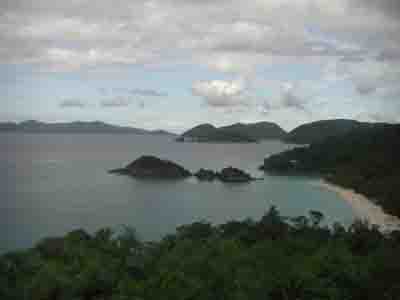 |
The dense jungles and breathtaking views make you feel like you are in another world (Photo by Samyog Pokhrel-Willett). |
The ferry ride from St. Thomas to the smaller nearby island of St. John resembles one of the scenes of the film “Jurassic Park” with its exotic islets covered in dense jungle rising out of the vast sea dotting the horizon.
Once you arrive at the Red Hook Ferry terminal at Cruz Bay on St. John, immerse yourself in these jungles, where tropical trees, ferns and even cactus form the foreground to the breathtaking views of the ocean from high in the hills.
Whatever your vantage point is, the natural and man-made beauty of the Virgin Islands would not exist without its unique diversity of plant life. About three-quarters of St. John consists of the Virgin Islands National Park; therefore the vegetation is allowed to grow much wilder than it is on St. Thomas.
Despite being only nine miles long and five miles wide, St. John has different climate zones. Since tropical storms generally come from the West, the Northwest shore is significantly wetter than the southwest side of the island, according to Rafe Boulon, chief of Resource Management of the Virgin Islands National Park.
| Natural tropical landscapes are the norm for hikers visiting St. John in the Virgin Islands National Park (Photo by Samyog Pokhrel-Willett). | 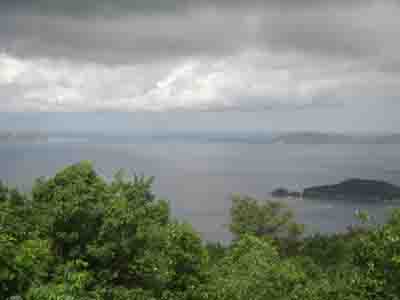 |
This change in biomes can be seen in a drive through the narrow, rocky dirt roads that wind through the steep hills of the park. Towards the northwest of the island, the soil is rich and vegetation is much denser due to higher rainfall, with tropical trees and plants dominating the scenery. Crabs thrive in this environment, as you can see their round red shapes dotting the forest floor almost everywhere.
Towards the south of the island, however, the environment is slightly more arid. Vegetation is sparser and dry, rocky ground is more common, particularly on the steep slopes. Many more shrubs are seen in this part of the island, as well as tall cactus that crown the tops of many cliffs.
Much of the plant life of the Virgin Islands that exists today consists of introduced species, while many species that existed in the pre-colonial era have now been wiped out. Boulon estimates that, presently, 10 to15 percent of the vegetation on St. John is exotic.
From the late 15th to early 18th centuries, starting from the first European discovery by Christopher Columbus in 1493, the islands went from Spanish to English to Danish occupation. During the English and Danish periods of occupation, 80 to 90 percent of the natural vegetation was burned to make way for sugarcane plantations as well as some cotton plantations. West African slaves were brought to work on these plantations.
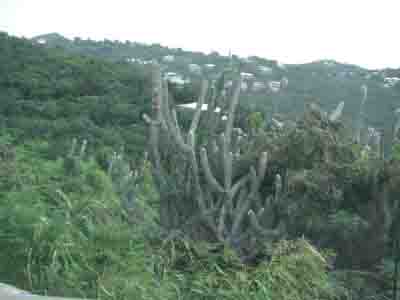 |
These tall, thorny cacti make you wonder whether you are in the tropics or the desert (Photo by Samyog Pokhrel-Willett). |
Before the islands were cleared, they contained much taller trees, such as red locust, satinwood, mahogany and masticodendron. The wood from mahogany trees was used to make furniture, while the masticodendrons were cut down to make sailboat masts.
The lignum vitae, or “tree of life,” a large, bush-shaped tree with orange buds, was used to make propeller bearings due to its dense, hard wood. It still grows in the Virgin Islands and is one of the most-recognized trees in the park, yet it is now threatened. Its buds are inedible, no matter how tasty they look.
The sea grape tree is also a common native species of the park. With its wide-spreading branches, circular green leaves and bundles of green grapes hanging next to its leaves, this tree can be seen everywhere, from the hilltops to the white sand beaches. Most of the palm trees are native, although some were introduced from the South Pacific islands.
In 1848, the slaves were freed in what was then the Danish Virgin Islands, and sometime around when the U.S. took over the islands in 1867, the sugarcane production stopped and the reforestation process began.
If you look at the steep slopes anywhere on the islands, you will likely see lots of tantan, an invasive species of fern that blocks the growth of other plants. Tantan were introduced after the burning of the vegetation in order to restore these slopes, as well as to feed goats and other livestock. Boulon explained that eating a tantan fern will cause one’s hair to fall out.
| This plant is not what it looks like. For some, it may appear to be marijuana growing in Jamaica. But it is the tantan growing on St. John (Photo by Samyog Pokhrel-Willett). | 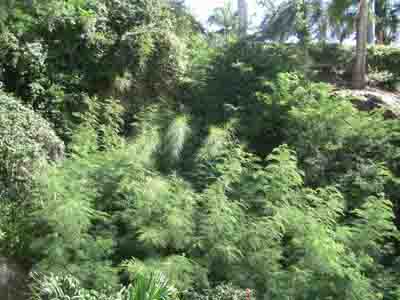 |
Park Superintendent Mark Hardgrove explained that it is quite a huge task managing the Virgin Islands National Park because there are only six park rangers. Making sure the plant life on all corners of the island stays protected is becoming a difficult task as fuel prices are rising.
Hardgrove explained that the park is looking for volunteers, so that it can protect its wildlife better and carry on the National Park Service’s mission:
“Conserve the scenery and the natural and historic objects and wildlife therein, and to provide for the enjoyment of the same in such manner and by such means as will leave them unimpaired for the enjoyment of future generations.”
| Palm trees, of course, are the heart and soul of any tropical island’s landscape (Photo by Samyog Pokhrel-Willett). | 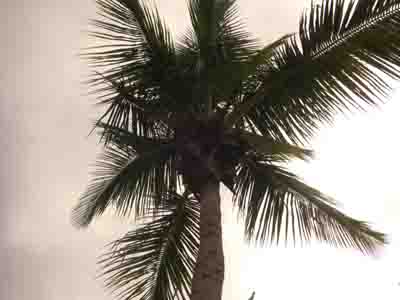 |
If You Go
- Directions— After landing on St. Thomas, take a taxi to the Red Hook ferry terminal on the east end of the island. Take the ferry to Cruz Bay on St. John. From the ferry dock, turn left and walk along the main road parallel to the sea. The road will curve to the right. Keep following this road, turn left when you reach the post office. There will be a small bay to your left. Walk to the end of it and turn left, and you will see the Virgin Islands National Park Visitor Center. There you can learn about vegetation and how to get around the island.
- What to Look For— Around Cruz Bay, you will see lots of coconut palms, lignum vitae and other coastal vegetation. Take Route 20 along the north shore of St. John to see the dense wet forests. To see the drier side of the island, take route 104 along the south shore.
| Despite being the tree of life, you cannot eat the fruits of the lignum vitae (Photo by Samyog Pokhrel-Willett). | 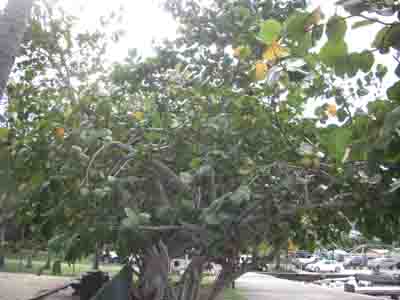 |

Comments are Closed